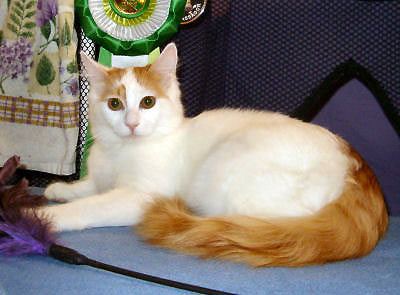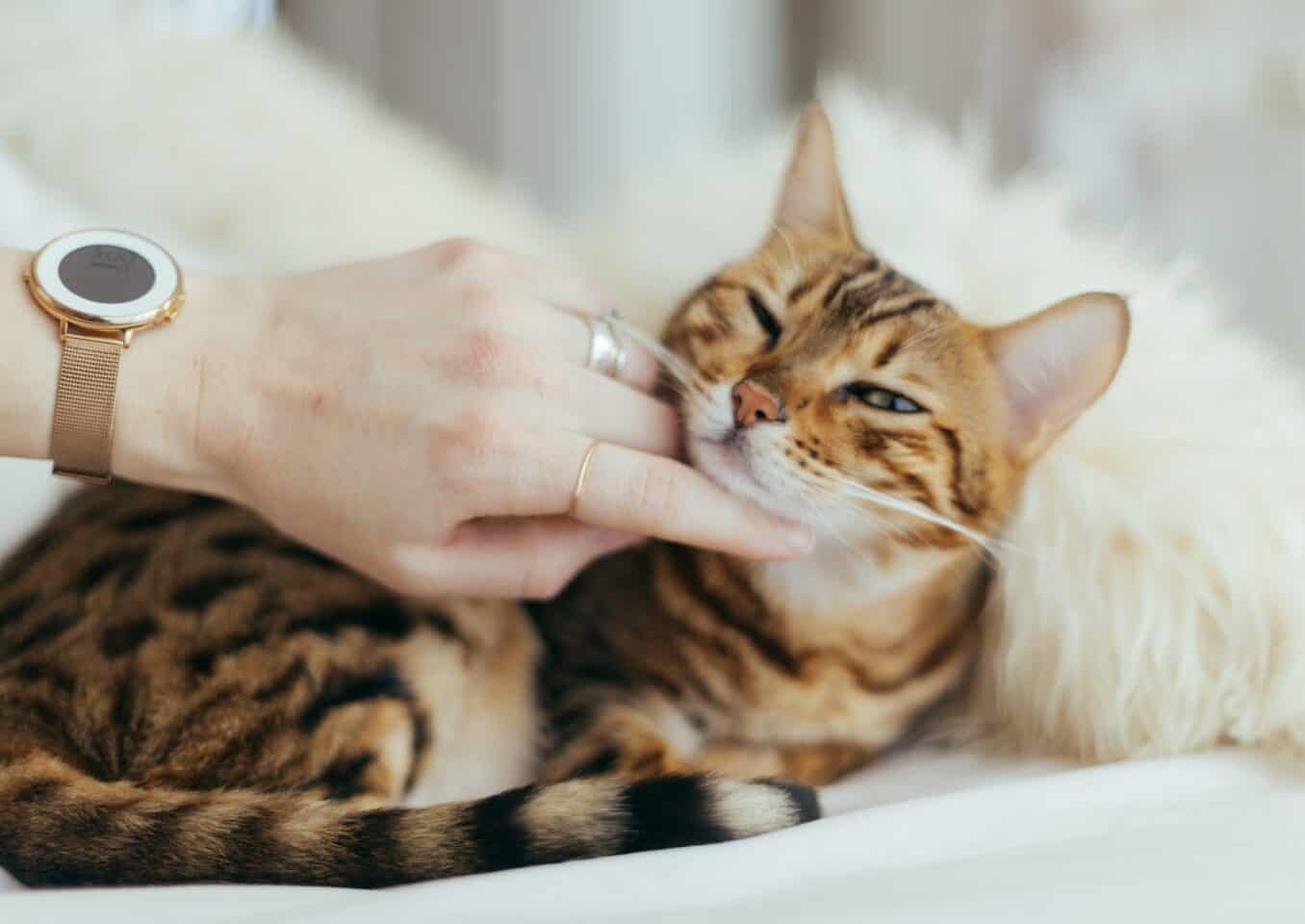
Proper cat care will help your cat live a long and happy life, and you’ll be rewarded with a great pet!
Cats make wonderful, delightful pets. Living with a cat provides joy and a loving friendship, and you will find it an honor and privilege as well. A feline companion will quickly inspire your admiration for its grace, elegance, and beauty. You may very well join thousands of others in a fantastic, deep, and powerful human-cat bond.
The decision to become a cat owner should not be taken lightly, however. Like all pets, it requires that you take full responsibility not only for care and maintenance, but also for the well-being of the animal. Make sure that a cat will be a welcome addition to your home and family life, and that you are ready to make this commitment. Keep in mind that a cute fluffy kitten becomes an adult that will be part of your family for many years.
Taking care of your cat is closely tied to the type of cat. If you know about the type of cat you are getting, then you will know what to expect and what to do to maximize both your enjoyment and that of your pet. No matter what its heritage is, every cat is unique. Individual cats can display vast differences in behavior, temperament, energy levels, territorial tendencies, needs for attention, and other traits. Read about Types of Cats: About cat breeds and picking a healthy cat for information on cat breeds, guidelines on choosing the best cat, and what to look for to get a healthy cat.
To help you prepare for a new cat in your family, some cat care tips are provided to help you cat-proof your home along with tips for introducing you new cat to other household members. But Before bringing a new cat home, be sure to have the necessary cat equipment on hand. Ongoing cat care will include providing food, water, and litter, regular grooming, exercise, play, and medical checkups. Being read will make the experience fun and rewarding for both you and your new companion as you start your lives together.
Learn about all types of cats, and cat breeds
Natural Cats–Mutation Cats–Hybrid
How to Take Care of a Cat
There are a few basics to understand in taking care of a cat. Proper feeding, housing, litter box, grooming, handling, play and exercise are very important for your cat to live a long and happy life. Also, take your cat to the vet for a check-up at least once a year. Here are some cat care tips for optimal cat care:
- Feeding
Feed your cat premium cat food. High-quality cat foods meeting AAFCO cat food standards will ensure that your cat gets a balanced diet with the right nutrients. Feline diets deficient in certain nutrients can cause diseases, including blindness.
Provide your cat with a fresh supply of water throughout the day. If you make a change to your cat’s diet, do so as gradually as possible. If moist pet food goes uneaten for two hours, refrigerate it. - Housing
Keeping your cat indoors or outdoors can depend on many factors, including your lifestyle and where you live. Many cat organizations recommend keeping your cat indoors for safety, better health and a longer life.
Allow your cat to choose favorite spots to hang out around the house, and then make it more comfortable with blankets and pillows, or a cat bed. You can provide your cat with scratch pads or scratching posts as well. - Litter box
One of the most important aspects of cat care is regarding the litter box. The number one reason adult cats are brought to shelters is for unresolved litter box problems.
Use a good quality litter for odor control and ease of cleaning. Place the litter box in a relatively quiet area that your cat likes to frequent and make sure there are multiple escape routes. Also make sure to provide enough litter boxes for your cat. We suggest following the one plus one rule – one litter box for each cat in the house plus one more. - Grooming
Groom weekly (or more frequently if possible) to prevent hairballs, improve the look of your cat’s coat, and check on your cat’s well-being. Use this time to examine your cat for common health problems as well. Check your cat’s gums, teeth, eyes, ears (look for signs of ear mites), skin, and limbs for possible problems. Also check for signs of pain, swelling or injury.
Most cats learn to enjoy the grooming process, and this can be a rewarding interaction between you and your pet as well.- Brushing
For longhaired cats and to minimize shedding, you can brush your cat daily. For problems with matted fur, use your fingers or a matt comb to work out the tangles. - Nails
Check your cat’s nails regularly and clip them as needed. You can provide scratching posts or pads to help keep your cat’s nails trimmed naturally. However, if your cat’s claws get too long, they may curve back into the toe pad. They are also more likely to get caught on something if they’re not kept trimmed. Make sure to use good quality clippers designed for cats to trim their claws. Press the paw gently to expose the nails. Make sure you clip well to the outside of the tiny darkish pink vein, called the quick. In case of error, clipping too short and causing bleeding to occur, have a blood stop or cornmeal available to use as a coagulant. - Ears
Cleaning Checking your cat’s ears should be done weekly as well. Clean them as needed, using a small amount of veterinary ear cleaner and a cotton ball. - Eyes
The wax-like secretions that form in the corners of the cat’s eyes should be gently cleared away to prevent irritation. Use a damp cotton ball to clean around the cat’s eye. Take extra care not to touch the eyeball. - Bathing
Bathing is not necessary for all cats as they are excellent at grooming themselves. However some breeds, like the longhaired varieties, do require regular baths. Place a small towel over the side of the tub to provide a surface for your cat to cling onto. Hold the cat with one hand and lather it with your other hand. The water temperature should be approximately 100 degrees. Wash your cat’s head, ears, and neck first to prevent any fleas that are on your cat from taking refuge there while you clean the rest of its body.
- Brushing
- Handling
Handle your cat frequently. Give your cat at least 10 minutes of physical attention every day. Take time to pet, stroke, scratch, or brush your cat for at least 10 minutes daily. It will calm and relax both not only your cat but you too. Recent evidence shows that contact with cats may actually reduce your risk of heart attack by as much as thirty percent! What a great bonus for giving good cat care.
If you can, start handling your cat when it’s a kitten. This early socialization helps a cat enjoy handling later in life, and makes it easier when it comes time for check-ups at the vet. Also make sure you massage your cat’s paws and toes often so your cat gets used to having them restrained. This will help immensely when having to trim its nails. - Play and Exercise
Try to play with your cat every day to make sure it gets enough exercise. Regular exercise is an important part of cat care as it helps your cat maintain body tone, muscle and keeps it feeling younger longer. You can play using a variety of dangle toys and teasers. You can also play by chasing your cat around the house.
Besides being fun, there are great bonuses to play and exercise. Getting your cat exercising daily will help lower the risks of diseases and minimize vet bills.
Cat Equipment and Supplies
There is all sorts of stuff available for cats that can be found at pet stores, mass merchandise stores, and even grocery stores. A lot of items are for fun, like cat trees, but some are essential.
Medical emergency items
| Cat Equipment: | |
|---|---|
| Basic cat care essentials | Sturdy cat carrier |
| Additional cat care items | Cat toys – appropriate for the age of your cat |
| Cat health care and first aid items | Grooming brush and mat comb for longhaired cats |
Card with cat identification and medical records |
Cat Proofing Your Home
By nature, cats are very curious. Catproof your home by looking at the entire environment for possible healthy and safety issues, and alert everyone of possible ongoing dangers. Here are some cat care tips for cat-proofing your home:
- Check that windows and doors are securely screened and latched.
- Look for dangling and potentially dangerous electrical cords.
- Remove heavy items that can be knocked over, and remove broken glass and other sharp items.
- Remove plants that can be toxic.
- Cats like warmth, so be prepared to supervise them around a fireplace or wood stove, and keep candles put away.
- Cats like crawly spaces, so be alert for the cat crawling under a recliner or into couch and mattress box springs.
- Cats can be poisoned, they are attracted to sweet-smelling things. Make sure there is nothing toxic laying that the cat could ingest.
- Go through the house and put medications, grooming accessories, creams, lotions and other potentially dangerous items in closed containers.
- Outdoors and in the garage put mechanical fluids like antifreeze, pool chemicals, fertilizers, and other potentially toxic fluids in closed containers.
- You may want to establish “cat-free” areas – rooms where the cat is not allowed and where you can store potentially dangerous items.
Introducing a New Cat
Gaining compatibility between household pets is very important, but be sure to introduce a new cat slowly. A new environment is very stressful for a cat, and adding other pets and children at the same time makes it even more so. Making introductions at a slow pace will give everybody time to adjust. Take into account the training and temperament of each animal and adjust for their needs. Slowly introduce children as well.
Cats become familiar with other inhabitants primarily through odor. Provide a safe place for each animal, then slowly introduce them to each other through scent over a few days, i.e. the bedding and toys. After a time they will be ready to venture into community spaces, but make sure there are always several easy escape routes.
References
- Dusty Rainbolt, Cat Wrangling Made Easy: Maintaining Peace and Sanity in Your Multicat Home, The Lyons Press, 2007
- Wendy Christensen and The Staff of the Humane Society of America, The Humane Society of the United States Complete Guide to Cat Care, St. Martin’s Griffin, 2004
Featured Image Credit: Paul Hanaoka, Unsplash
